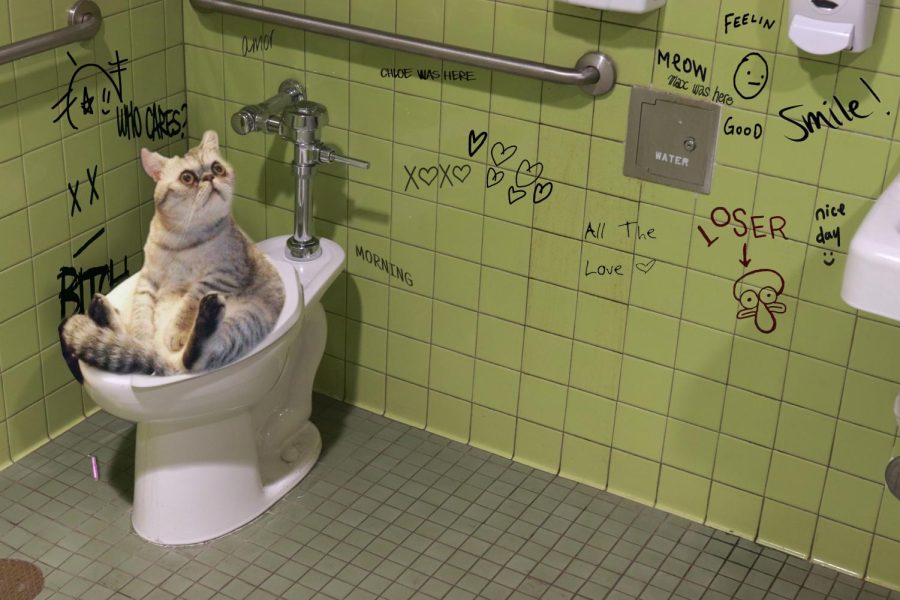Why Flushing Cat Poop Down Your Toilet Isn't a Good Idea - Advice for Proper Handling
AppointmentThe author is making several great points on the subject of How to Dispose of Cat Poop and Litter Without Plastic Bags overall in this content down the page.

Intro
As cat proprietors, it's important to be mindful of just how we throw away our feline buddies' waste. While it might seem hassle-free to flush feline poop down the toilet, this method can have destructive repercussions for both the setting and human health.
Environmental Impact
Purging pet cat poop introduces dangerous virus and parasites into the water system, posturing a significant risk to aquatic environments. These pollutants can adversely affect aquatic life and concession water high quality.
Health and wellness Risks
Along with ecological worries, flushing cat waste can also pose health risks to humans. Cat feces may include Toxoplasma gondii, a parasite that can cause toxoplasmosis-- a potentially severe disease, especially for expecting ladies and individuals with weakened body immune systems.
Alternatives to Flushing
The good news is, there are more secure and a lot more accountable ways to take care of pet cat poop. Think about the complying with choices:
1. Scoop and Dispose in Trash
The most common approach of getting rid of feline poop is to scoop it right into a biodegradable bag and throw it in the garbage. Make sure to make use of a dedicated clutter inside story and throw away the waste without delay.
2. Usage Biodegradable Litter
Select biodegradable pet cat litter made from materials such as corn or wheat. These litters are environmentally friendly and can be securely gotten rid of in the garbage.
3. Bury in the Yard
If you have a backyard, think about hiding pet cat waste in a marked area away from vegetable yards and water resources. Be sure to dig deep enough to stop contamination of groundwater.
4. Mount a Pet Waste Disposal System
Purchase an animal garbage disposal system particularly developed for pet cat waste. These systems utilize enzymes to break down the waste, reducing smell and environmental influence.
Final thought
Liable animal possession extends past providing food and sanctuary-- it also includes correct waste management. By refraining from purging cat poop down the bathroom and going with alternative disposal techniques, we can decrease our environmental footprint and safeguard human health and wellness.
Why Can’t I Flush Cat Poop?
It Spreads a Parasite
Cats are frequently infected with a parasite called toxoplasma gondii. The parasite causes an infection called toxoplasmosis. It is usually harmless to cats. The parasite only uses cat poop as a host for its eggs. Otherwise, the cat’s immune system usually keeps the infection at low enough levels to maintain its own health. But it does not stop the develop of eggs. These eggs are tiny and surprisingly tough. They may survive for a year before they begin to grow. But that’s the problem.
Our wastewater system is not designed to deal with toxoplasmosis eggs. Instead, most eggs will flush from your toilet into sewers and wastewater management plants. After the sewage is treated for many other harmful things in it, it is typically released into local rivers, lakes, or oceans. Here, the toxoplasmosis eggs can find new hosts, including starfish, crabs, otters, and many other wildlife. For many, this is a significant risk to their health. Toxoplasmosis can also end up infecting water sources that are important for agriculture, which means our deer, pigs, and sheep can get infected too.
Is There Risk to Humans?
There can be a risk to human life from flushing cat poop down the toilet. If you do so, the parasites from your cat’s poop can end up in shellfish, game animals, or livestock. If this meat is then served raw or undercooked, the people who eat it can get sick.
In fact, according to the CDC, 40 million people in the United States are infected with toxoplasma gondii. They get it from exposure to infected seafood, or from some kind of cat poop contamination, like drinking from a stream that is contaminated or touching anything that has come into contact with cat poop. That includes just cleaning a cat litter box.
Most people who get infected with these parasites will not develop any symptoms. However, for pregnant women or for those with compromised immune systems, the parasite can cause severe health problems.
How to Handle Cat Poop
The best way to handle cat poop is actually to clean the box more often. The eggs that the parasite sheds will not become active until one to five days after the cat poops. That means that if you clean daily, you’re much less likely to come into direct contact with infectious eggs.
That said, always dispose of cat poop in the garbage and not down the toilet. Wash your hands before and after you clean the litter box, and bring the bag of poop right outside to your garbage bins.
https://trenchlesssolutionsusa.com/why-cant-i-flush-cat-poop/

I was made aware of that editorial about How to Dispose of Cat Poop and Litter Without Plastic Bags from a friend on another web property. Are you aware of another person who is enthusiastic about the topic? Be sure share it. Thanks for your time. Please check our website back soon.
Get An Estimate